Why this BLOG? Well, I'm so tired of so many wrong decisions in today's car industry, mostly because people don't really stop-to-think. So I decided to post my thoughts. Why beyond 6000? An engine will be more efficient working faster. Most however don't go beyond 6000rpm, hence the BEYOND...6000.
Monday, April 7, 2025
Zetec se 1.4 150hp project.
Sunday, March 9, 2025
Humans, earths pinnacle of rational brain evolution, love to tame evolution.
Porsche takes the grand prize.
Porsche is known for some of the best sports cars out there. People tend to compare Porsche with Ferrari and they will be ultimately wrong. You can buy a 911, drive it like you've stolen it, every day and night, and in the end, just take it to the 15.000km maintenance period for an oil change and small checks. Try thrashing a Ferrari on a street race and you'll end up with it on a tow-car with an expensive bill and 1000 broken or wear'd-out parts. OK maybe I was a bit too harsh... make it... 999 broken or wear'd-out parts. Yeah I know I'm caustic, but think about the following: used car reliability guide (this is where you really see what is the car is built to last) starts with Ferrari 1st, has Lamborghini and Maserati in it and ends in tesla 10th. If you think that a tesla is built to last the 4 year battery span and then get scrapped... and still is 9 positions above Ferrari, it says a lot about it. Check it your self in HERE
Porsche not only managed to build a reliable supercar, but they've managed something that is completely CRAZY and respectful all at once: a good 911.
911 Porsche was a rear wheel drive, rear engine thing. This layout counters physics of motion on 90% on scenarios. Today it is 4wd but still rear engin'd!
Let me be clear:
- Front wheel drive car with the engine in the front, is stable moving forward and has difficulty with direction changes. The weight at the front generates forward momentum and the front wheels get over-loaded with weight/torque and directional change.
- Rear wheel drive car with the engine in the front, is stable moving forward, stable while cornering, unstable under heavy acceleration particularly under cornering.
- Mid engine (front or back) with a rear wheel drive, is the most stable design for all circumstances, including stability under acceleration, as the weight on the engine promotes squeezing the tires to the ground increasing traction... if it loses, however, the experience is less progressive and not easy to master.
- Rear wheel drive car with the engine in the back, is only stable if you are moving backwards, in a straight movement. Else, the inertia will constantly try to make the rear end of the car, overtake the front. Rear wheel drive, rear engine lovers (911 owners) also claim increases adherence under acceleration, but the fact that once you brake traction you have an even more extreme and even more difficult to master overseer, rendered a lot of them in the hospital... or morgue. This is not helped with the fact that, lack of space on the rear, makes the front be the one holding the petrol tank... and this means that, as you start emptying it, the front has less and less weight to help you corner. It becomes a puzzle of balance that constantly changes variables.
So, having a true sports car that is stable, easy to drive and with a composed figure is difficult, with rear engine is really very difficult to master. Adding all the reliability, make them one of a kind and although the starting point is ALL WRONG in pure physics terms, the over engineering around it to tame it down, managed true miracles over the years, and you have to respect that. Still I would never buy a 911. not that I have the money to pay for one... that I don't, but the design is wrong and my engineering brain can't overlook that fact.
So Why is Porsche tame evolution? Well their way of managing their brand to protect the 911! They've thrown BILLIONS into developing the wrong platform almost to perfection, But then throw away the opportunity to do the same with much better platforms.
Enter the Cayman:
The Cayman is a Boxer with rigid top! Same Rear wheel drive mid engines beauty of balance and poised car, but with less weight (less reinforcement for the cut top) and better torsional rigidity. But for some reason, Porsche never really beefed it up with their best engines, they reserved that to the 911 RS series... but why? Well because if you were to test drive a Cayman GTS4.0 the de-tuned version of the RS engine, you would say: this feels better, pity it lacks the grunt to leverage the chassis.
It was only in 2021 (the platform exists since 2016) that Porsche properly fitted the engine from the 911 GT3RS (no de-tuned bs) to the chassis with the Cayman GT4 RS. Talk about 911 protection.
But this has happened before... Enter the 944:
It's 1989, Porsche has its 911 line and then launched the 944 turbo.
Bare in mind that the 92x and 94x chassis where all front engine, rear wheel drive cars, so the on the limit behavior was just beautifully balanced, unlike the 911. But the 280bhp 911 sold for being the one with the best engine and as such faster 0-100 times.
HOWEVER the engine on the 944 turbo was a 290 bhp able one. This would make it faster, quicker on 0-100 and crucially better handling. 911 would have been extinct right there and then. So Porsche de-tuned the 944 turbo, until it managed to produce 250bhp, and even still, it would only be 0.3s 0-100 and 3km/h top speed slower then the 911. Can you imagine the original 290Bhp numbers?
So, instead of letting the old 911 die... and invest all that engineering time in making a bad platform good, they should have just embraced the 944turbo.. develop it further, reach the boxter/cayman faster and give us better cars sooner.
Porsche is not alone... Honda follows close!
Honda has always managed to be respected because it followed it's own trends instead of copying others. Light Sports cars with High Revving engines with better revving range that torque figures, much like a motorcycle.
The VTEC and their B16, B18, F20C, K20 and K24 engines are so good that so over engineered (known to be able to support twice their power numbers on stock internals), that they've managed to go against much more expensive and bigger engine'd cars. They are a true pinnacle of engineering and used to be known for producing masterpieces of engineering brilliance.
During their best times, Honda created the Civic Type-R, Integra Type-R, the all aluminium NSX (Vtec, even thought the Vtec ha been designed for inlines) and the glorious s2000.
Honda even managed to create the second generation NSX in the middle of the Hybrid eco-mania era, and make it better than the rest by having torque biasing front electric engines, plus a hybrid rear drive with an electric engine to compensate the low end lack of torque, until the petrol engine gained revs and started to shine it's magnificent high rev character. It was perfect.
But they where not just brilliant with top end cars... consider the civic and look at the versions and it's competitors form other brands:
| Parameter | Honda | VW | SEAT | PEUGEOT | Renault |
|---|---|---|---|---|---|
| Model | Civic Type-R (EK9) |
Golf Mk4 |
- | 306 GTi |
- |
| Engine |
1.6 Vtec |
1.8 Turbo |
- | 2.0 | - |
| Power | 185PS | 180PS | - | 167PS | - |
| Weight | 1050Kg | 1213Kg | - | 1215Kg | - |
| Ratio | 5.7 Kg/ps |
6.7Kg/ps | - | 7.3 Kg/ps |
- |
| Parameter | Honda | VW | SEAT | PEUGEOT | Renault |
|---|---|---|---|---|---|
| Model | Civic Type-R (EP3) |
Golf Mk5 |
Leon Cupra R | 307 GTi |
Megane2 RS |
| Engine |
2.0 Vtec |
2.0 Turbo |
1.8 Turbo |
2.0 | 2.0 Turbo |
| Power | 200PS | 200PS | 225PS | 177PS | 225ps |
| Weight | 1190Kg | 1347Kg | 1320Kg | 1320Kg | 1232Kg |
| Ratio | 5.95 Kg/ps |
6.7Kg/ps | 5.7Kg/ps |
7.45 Kg/ps |
5.47Kg/ps |
Even with a 5.95kg/ps against the lower SEAT and Renault, the engine availability under VTEC would mean it would smoke them on a track without breaking a sweat. So even thought it was falling behind, the end result was still very competitive.
But then!
Honda killed the NSX, killed the S2000, killed the Integra Type-r, and ... started Turboing the K20 engine from the Civic Type-r in pursue of ps numbers, much like the europeans had done. Pocket rockets are now 1.6, 1.8 or 2.0 but always turbo. No perfect delivery of power, no millimetric throttling, no instant response...and a bunch of unneeded electronics to tame the beast down, while generating tones of heat soak issues and absurd cooling needs, out of an already tight and packed front end of the car!
And they didn't need to!
Prototype Racing was installing the K20A with a tune, new exhaust and intake and pulling 260ps; BTCC EP3 type'r where running over 300Ps without turboing the car. Why turbo it to go 306 ps?
Why then push it to 320 unreliably?
It's a complete joke that the latest Civic Type-R reduced the engine RPM limit, to get to 320 ps but it will not run a full lap without SERIOUS overheating issues... This is just dumb.
Some tuners have turboed the EP3 k20A and made over 360ps reliable and daily driven.
Honda, on its own, killed the ONE thing that made them better than any other brand out there, and replaced it with a copy'paste sort of mentality, and built... well... far worse products.
Seppuku is the only word that comes to mind.
Why? Well the one thing americans complain (yes, no other country complains about Honda's torque numbers, except the 7.2 V8 20 ps nation) is low end torque. Evidently! had they ever driver a proper race car, they would know that the engine tuning for high rpm, will sacrifice torque, but in the end, having more usable engine range is crucial on the track. Obviously it's hard to get this principle if you're running around in ovals the entire time!
Still, A high rpm engine will, by design, not be optimized for torque particularly at low rpm. The electric engine is tremendously capable or torque, but at high rpm it loses it's efficiency and starts having wear and heat problems.
Till we get a new breakthrough, the technology that is positioned to become the best future for cars, is the hydrogen engine. This will produce even pore power than gas (out of the same design), and the speed of the hydrogen combustion is higher and more violent than compressed atomized gasoline, so high rpms will be the tune for this type of engine.
So: in my opinion, unless tomorrow we find out that nitrogen is a better option, a hydrogen powered car, can have hydrogen fuel cell power a small electric engine to produce torque and then handover to the hydrogen combustion engine to the high rpm efficiency. In this possibility, engine designs that run high rpm's with the technology and engineering to match the design are the future... and Honda was the best positioned brand to mainstream this... by miles.
Volkswagen... another weird'o!
If I ask you to name a sports car from VW, you will, unless you've just landed on this planet yesterday, say: Golf GTI !
I'm not a Golf GTI fan. I think that they are like an iphone... to much overprice for too little delivery. However they are probably (in exception of the Corrado G60, VR6 and PD engines) the best thing that VW ever did.
Except for the fact that they didn't want to!
Yes that's right. The GTI should have been called VW SkunkWorks.
Golf was the replacement for the beetle, but the first ones where built with very little quality and VW was not really going anywhere.
In 1974, a group of people that included the man responsible for VW communication, decided to create a sports Golf. They gathered engineers and top mechanics, and they let loose their desires. The board, that dismissed the idea. They went underground and while the majority of the board was looking the other way, they quickly assembled the a prototype. Simple recipe: Big engine, light car, stiff suspension.
When presented with an almost finished product, the board decided to change their heart and embrace the project. GOOD... it kicked started something brilliant. No not the hot hatch... this crown does not belong to the GTI.
The first hot hatch EVER came from... wait for it... the AMERICANS. That's right. The first Hot Hatch ever was the AMC Gremlin in 1970. A full 5 years before the GTI. Not only that, it featured an inline 6, from the land of the V8, with more displacement than your living room and 2 and a half horse power.
The GTI was an important mark, in my opinion; because it kicked Ford in the chin... and they immediately started working on went to become the Escort XR3i, a Fiesta XR2i.
VW went back to its idiocy and spent the next years producing mediocre GTI versions and weird R versions that really should be the GTI's... and apparently the latest one (the mk8) may be the only good thing coming our of VW since the mk1.
It's safe to assume that Golf GTI mk16 will be also a good one, then.
BMW doesn't come out clean either!
BMW never wanted to create the M1. Much like VW didn't what to create the GTI.
This must be a German thing, there management has no vision and employees take or their blindness and solve the problem for them. It's like a company ESP!
While the Division manager took 2 week vacation, the engineering team, overtimed to created the M1. Upon return, he had an M1 prototype with zero development cost ready to go... so they went with it!
But the idiocy isn't done yet! At that point in time, BMW had replaced the E46 M3 beautiful master piece 3.2, 260ps In line 6 with an american type v8 style monstrosity in the E92. They did it because the E92 was bigger and heavier than the E46. The result was a worse handling car that lost al the nimbleness that E46 was known for.
The E46 was no more and the E92 was big and sluggish compared to it. But the M1 was much lighter than the E92 and with the same engine, it became what you would have expected the E92 M3 to be as an evolution of the E46. This could not be! an M1 better than the M3! So, instead of allowing this throught the doors, they've got the in line 6 engine from the z4 and turboed it for the M1, but still shaving 80ps out of the total package.
Still, If the race track is sufficiently filled with corners and with little long stretches, the 340PS M1 will sill outperform the 420Ps E92 M3, so you can imagine just how much of a facedrop would it have been, had they not crippled the car. In truth I much rather have it like this, the V8 weight would have messed the balance and perfect 50-50 distribution anyway.
And here we are ladies and gentleman. Brand decisions to cripple their products in the name of brand policy, and ignoring the "let's put the best product we can out there rational". We could have much better cars than we do, hed the engineers be left alone and away from politicians and marketeers
Sunday, February 16, 2025
When the Snake-oil salesman loses charm and becomes seen as it should have always been seen.
I've never been an elon fan. I would actually not give a flying f$%# about the guy, had it not been his position to EXPLOIT human stupidity for profit, with a cocky attitude. And that's why I absolutely hate the guy. He profits out of people not really using the brain. Sure...a lot of people do that all over the world, stating by 99% of governments...
...but this dude POLLUTES the environment in a very hard to reverse way (lithium contamination is BAD), then he flags his mediocre products as top-stuff (sure apple does the same, but if you crash your iphone it doesn't trap you inside while bursting to flames like a crematory)...
... not to talk about the impact on electricity cost for having EVERYONE charging cars off the already stressed power grid...
... not to get into the absolutely stupid marketing around his batteries that CLAIM to last twice as much as competitors (the reason is that they have twice the cells and as cells go bad the battery chains engages the backup cells, and that's why ludicrous mode voids your battery warranty as they juice them all at once... meanwhile, you accelerate, break and turn twice the weight you would actually need to, for... marketing purposes).
Sure it makes me the exception, in a world that envisions him as the supreme lord of intelligence, but at the light of facts, this becomes more a fact of "in the world of the blind, the one-eyes is king" theory, rather then "the man is a messiah"... think a bit about it and take your own conclusions... oh meanwhile read https://www.tesla.com/pt_pt/blog/tesla-lithium-refinery-groundbreaking
The legion of musk lovers is such that it managed to shift a US election (sure WOKE stupidity helped a bit) towards the only US president with pending sentences from being convicted.
A Sieg Heil was the trigger
Tesla is bleeding sales TREMENDOUSLY (as one should expect from a bs product) and the Chinese, using more and more solid-state and sodium-carbon batteries (PLUS better conception and construction) are taking his business away. Plus all proper car manufacturers are turning to hydrogen and nitrogen as their fuel for the future, with hybrid drive car designs (what really makes sense).
Again, nothing I didn't warn about over and over, but people love hypes and the loud mouths always get every monkeys attention.
Now? Now you have this and this
...sort of gems to read and laugh, if your like me, at least, and didn't buy the hype.
If you did, well, get books to read at gas stations while your bs car charges for hours... sure carrying books is dumb as they are heavy, but so does 50% of unused battery is, and don't use electronic reading as that requires juice you desperately will need to charge your bs car... because of massive adoption of electric cars form idiots like you, on an already stressed power grid.
all of this, form the agenda of this character:
Ahhhh the joy of thinking for your self.
So why oh why is the tesla product bad?
First thing : If your car had a limitation of life on the fuel tank, and replacing it once elapsed cost more than the car's worth, then you would build the rest of the car to last the same... it's a make to recycle market... like laptops or cellphones. Problem is that your laptop does not cost half the house value.
Truth is that the teslas steel panels are "stamped" with little to no metal fatigue recover process to them. This makes the metal lose most of it's corrosion resistance, this would be minimized by galvanizing the chassis but then... they don't! They will rust away like an italian car.. but without the beautiful design and the charm of the italian car! oops
Second thing : STUPID design. A single motor tesla MAKES MORE SENSE than a dual motor! Weird thing to say... looks like saying that a mustang Inline4 is better than the V8. But then why? Electric motors generate torque instantly and without need for acceleration, unlike a diesel or petrol one. But there is always physics to take into account.
The diesel engine is good generating LOW end toque, but they are nonexistent at high revs. Petrol engines are the opposite, High revs is their home and low revs is where they miss the torque... People have been turboing the cars to compensate but it then kills response! Electrics, are a bit like a steroid enhanced diesel: huge torque numbers down low, but tremendously inefficient HEAT and bearing stress at high speed. In truth, without having electronic throttling, the electric engine spins to destruction as it will burn out from bearing load and over spinning. So how to you fix this?
You can have a small engine with a lot of torque - But then your customer will sell the car after the first highway trip not being able to drive fast.
You can have a big engine - But then the customer will sell the car after thrashing it on the highway for less then 10 minutes and then stop with a drained battery and a burned engine...like teslas
You can have the big engine coupled with a gearbox so the high rev engine is nit revving that much - but then the extra torque will make you smoke the wheels everywhere else outside the highway.
You can couple the big engine with gearbox with a ESC like you do with RC cars - But then the ESC dissipates the power into heat throwing battery life out the window... RCs allow you to change battery, your car... not!
The reason the hybrid hydrogen engine is the future lays here precisely. Hydrogen powers a fuel-cell to generate electricity for a low rev high torque electric motor that then transits to a hydrogen burning, high rev internal combustion engine. Same fuel, best of both worlds, no need for batteries except for starting the car.
So the low-end tesla, is more logic than any of the dual motors (claiming 1000hp out of a motor that only knows torque...marketing again).
Third thing : tesla is a marketing gig. The car looks futuristic and has all the electronic toys, but then:
-If you slam the door it dismantles the inside covers... worse in the cyber-truck as they get stuck in the seat and makes it impossible to open the door without breaking the door liner to pieces, something hard to do from the outside, and very hard to do from the inside. The modelY door liner speaker mount has a single screen holder... while a BMW, VW would have three and VOLVO 4 or 5.
-Most of the claimed features are a lie and will require you to spend money to use the software... apple style scam.
-Steering by wire is laggy as hell and not a real replacement for a direct steering drive.
-Cars are not water-proofed (most if not all manufactures waterproof their cars to around 1 meter)
-The entire car build is cheap, so they can maximize profit. It's like if FIAT or TATA would charge Porsche price for their cars... and then people brought them! it's mental.
Fourth thing : tesla has been towing their cars from crash sites, not allowing for investigations to happen and flaws to come to light. Some owners have been bullied by lawyers not to publicly complain against the company.
Sure they are a new company and lack most of the experience of a heritage brand. However, they could have fixed this easily by purchasing a brand in need of help, and then revamping it.
A lot of the car design was copied form other brands (and it's easy to show money and hire skilled people from other car brands in the USA after Detroit went to 5h!7), but then the tightening of profit first quality...NOT, ends up undermining a lot of the "power" that skilled employees and their knowledge brings in.
In the end, economics is the best castration engine for engineering. Couple that with blind marketing orientation and you have the perfect storm to build bad product that look good.
Still, pivoting, would you really buy a cheap car with a high price, or go for a Toyota or Honda with years for experience and incomparably better products? I know how I would choose, but then again, i never brought his snake-oil.
Sunday, January 12, 2025
Car engines and Golf... no not that VW thing... the sport!
What do Golf (the sport) and Car engines have in common?
Easy answer would be physics... duh... sure! But if you consider a simple design of the golf ball and the latest trend in engine head porting, things start to get more clear... and complex all at the same time.
Why? Well that is ways of the very tortuous world of : FLUID DYNAMICS (yes yes every mechanical engineer will have nightmares about flow calculations in Fluid Dynamics discipline and also thermodynamics applied to flow in fluid dynamics... I gather that bumps in suicide rates are probably related to these sort of calculations).
Fluid Dynamics!
And this is what we must understand in order to understand the concept of dimpling porting of engine heads. Why? Well because the concept divides mechanics and most of them are right as most of them are wrong!
Wooops? Right and Wrong all at once!
Most will defend you should port the head like this:
They are partially wrong!
Some will defend you should port the head like that:
They are also partially wrong!
But before we get into the details, let's look into the first counter arguments of Using or not Dimple porting:
Argument 1 - F1 cars don't use them
Sure but there are SEVERAL reasons for that.
1 - F1 engines run at VERY HIGH RPM, meaning that the CFM through the head is HUGE and the dimple designs work better for High and Low pressure areas. The F1 head channels have very little of those.
There is a simple theory to explain the engine CFM importance and that is the principle behind the not very well known Torque oriented VTEC system from Honda.
The Low rev Vtec system consisted in a capping of the 16valve head to run almost 12valve mode, so that the air going into the engine, at Low engine speeds, would have a higher velocity and uneven geometry while entering the cylinder
To produce Power numbers, you favor High speed, High turbulent, high flow instead of this non-turbulent flow. F1 engines are made for High Revs and as such High RPM. Not really for torque at low engine speed. This means that all optimization goes towards Direct, high speed flow... as we can see on point 2
2 - F1 engines have a HEAD design that is purposely made for high flow speed. While production cars consider space and compactness due to the valve train losses, the same principle does not exist in an F1 engine due to point nr 3.
F1 Cosworth v10 engine head port design
3 - F1 engines have Pneumatic Valve trains. F1 engines use a pneumatic valve train. This allows for a narrower angle on the valve train, and as such more direct port designs.
It also generated a valve lift time with a rather square wave, making the input of air FAR greater and and abrupt, making the acceleration and deceleration of air going in and out of the cylinder less progressive. Those are circumstances of a high rpm flow, and as such, the entire design considers flow and not particularly flow speed ant specific RPM's.... they are.. closer to forced induction than NA's in that manner.
Argument 2 - But then why aren't cars built like that?
Mythbusters had a saying about this. They tested a car, then the same car with clay added dimple panel features. Even considering the weight, of the clay the same car made a run with 27 and 29 mpg proving the dimple works of the airflow.
But if that is not enough for you, NASCAR rules banned dimpling the hoods, roofs, and trunks of their racing cars!
Argument 3 - My turbo engine didn't see any improvement... actually it makes less power.
Same principle as the F1 engine. The FORCED induction engine has ALL AIR under high pressure, so the regions of lower and higher pressure that an NA engine would suffer from are minimized by the forced induction nature of things. You don't really look towards minimizing pressure zones and looking for air velocity there! just size of ducts to make the air into the engine. The larger the better... simple math... dimples reduce this in 2 different ways as we are about to understand.
OK... so back to Fluid Dynamics.
An NA engine, particularly with a high efficiency intake plenum, or ITB's , needs to Accelerate the air into the cylinder, then decelerate as the valve closes, then re-accelerate, etc etc etc... and the acceleration will be crucial to allow the dynamics of the air flow to pull more air into the engine by using the flow inertia. So the speed that the air goes into the engine if very important, particularly on specific regions of the intake tubing (this very important part will be revisited later.)
Back to the golf ball
A clean surfaced ball will not go longer than the dimpled ball. will go slower than the dimpled ball and will be more prone to deviation by wind than the dimpled one.
Known fact for years that are easy to explain. The dimples "catch air" and create tiny swirls around the surface of the ball, as it goes through the air, the swirls become sort of a cushion of air. See how hovercrafts move? lookalike principle. Ever tried to move 2 glass sheets stacked together? Hard right?But if you add water or air between them, you can't make them stop!
Air is a fluid and as such it has a viscosity element to it. It sticks better to smooth surfaces and it slips better on fluids. So if you can make the layer slide to the surface swirl back and generate a cushion, the next layer of air slips through this cushion much faster than it would if in contact with the surface.
Not only that, but the drag that the swirl of the back side of the ball generates, also tends to break apart and not pull back on the ball as much, reducing the area exposed to back pull... Even cooler then!
Cool principle right? Right! So it must work with in any other situation... err no!
1 -First of all, the ball move through the air, not the air thought the ball so the principle is not exactly the same
2 -The ball is round and the main pressure point faces the wind... the inlet manifold tubing have bends and curves and features that can generate low or high pressures... it's not homogenized at all unlike the golf ball.
3 - The ball spins through the air. The engine inlet manifold doesn't.
4 - As you add dimples to a flow pipe, you are generating an invisible layer of air around the surface effectively REDUCING THE bore size! And the dimples alone, if surfaced clean, it would mean 1 to 2 more millimeters in bore size! AND THIS IS WHY ladies and gentlemen that:
- The turbo guy hates this because it produces less power
- The High speed engine hates this because it reduces intake tubing diameter.
HUM.. ok you're mean. You show me something cool and then it's is not applicable.
No... I'm not mean. Physics is thought... get a grip!
So so far we can conclude that dimpling can solve the drag problem.
That under pressured flow this is not really important, and that under NA flow this can be the result to more air speed and as inertia shows, quite more air into the engine.
We've also understood that the dimples will reduce physically and then in flow terms, the usable diameter.
So you are wrong! Dimples are bad and the smooth fellas are right.
Nooooo I told you physics is tough and fluid dynamics is even worse... so suck it up and let's continue our roller-coaster ride.
As usual, engineers base a lot of technology in studying, testing and resulting data.
The Intake ports have the following naming:
Different areas have different drag and high/low pressure zones:
It also has different types of design, called Tangential port or Helical port.
Tangential ports are straight and very good for high speed flow. They product better high end power and are the preferred design for high performance engines.
Helical ports twist the air before the entrance of the cylinder, making the air enter the cylinder in a swirl movement.
Some cylinder designs used to have one Tangential port and a Helical one to generate a sort of compromise, sacrificing high end power over low end torque and usable mid range.
The Honda Low-rpm vtec explained earlier combined manages the best of both worlds, by allowing the low speed valve to open slightly, while the other opened fully, inducing and uneven air entry and resulting in a swirl, and then fully opening both valves at top end RPM with 2 Tangential ports providing the best flow.
Different port designs favor not only different engine applications, but also generate different low pressure zones.
Let's look at high pressure images of an intake side of an engine:
.jpg) Fair.. could do a little less on the shoulders and a bit of a strip of triangular shaped dimples right through that division
Fair.. could do a little less on the shoulders and a bit of a strip of triangular shaped dimples right through that division Hell no! Lose the shoulders dimples, add right down the end of the port where you have a smooth fully dragging surface before a squeeze!
Hell no! Lose the shoulders dimples, add right down the end of the port where you have a smooth fully dragging surface before a squeeze!
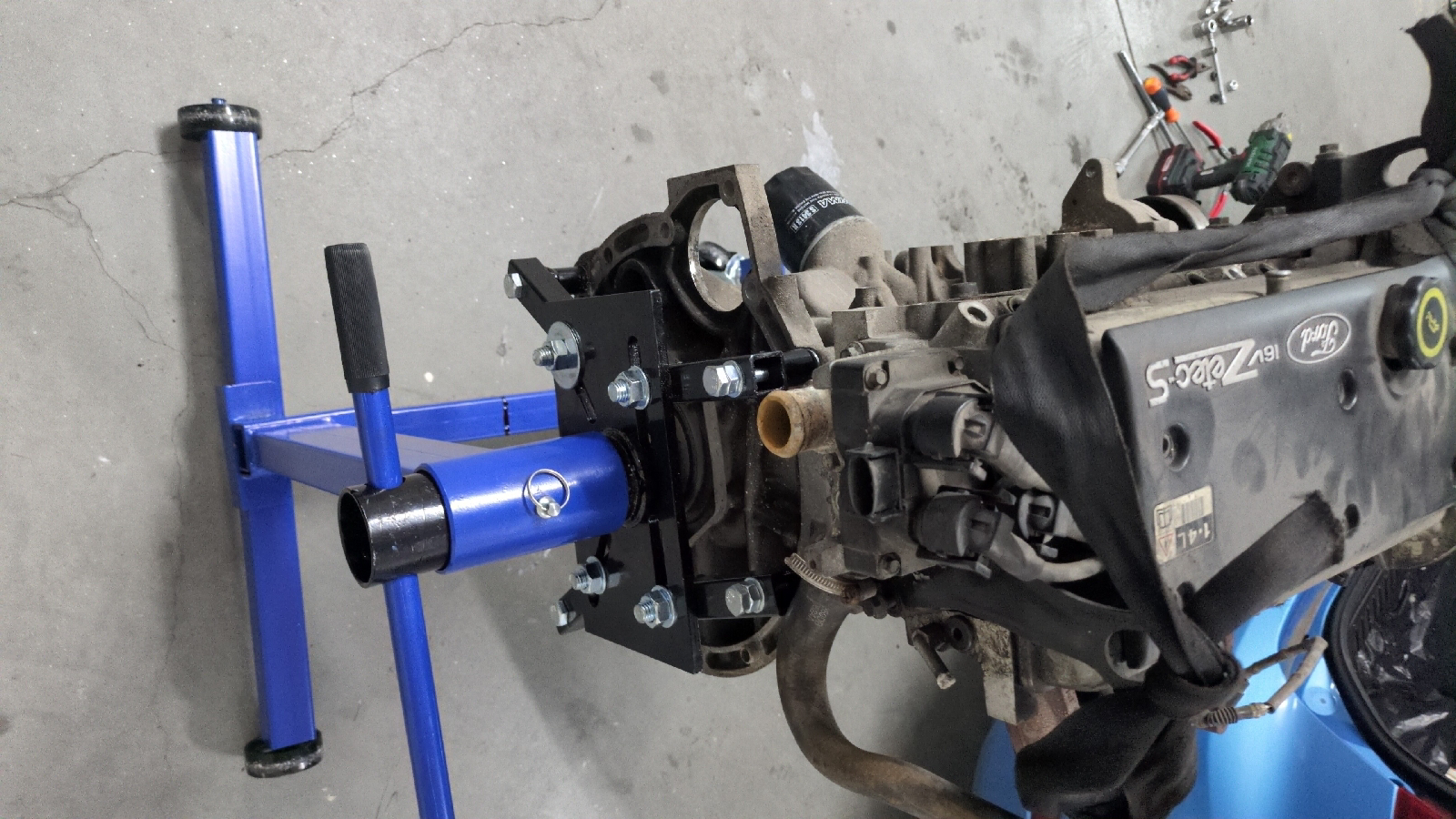




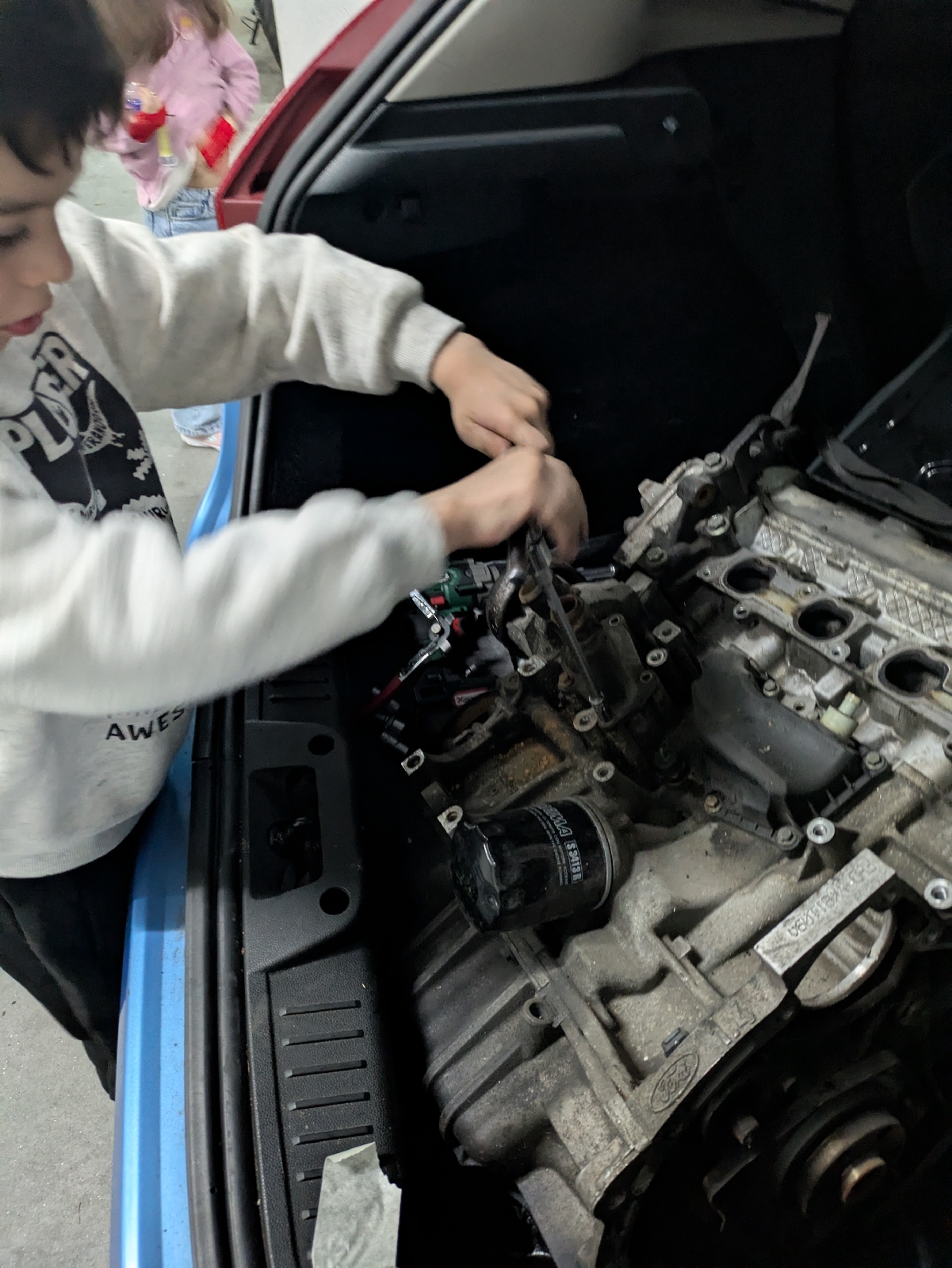

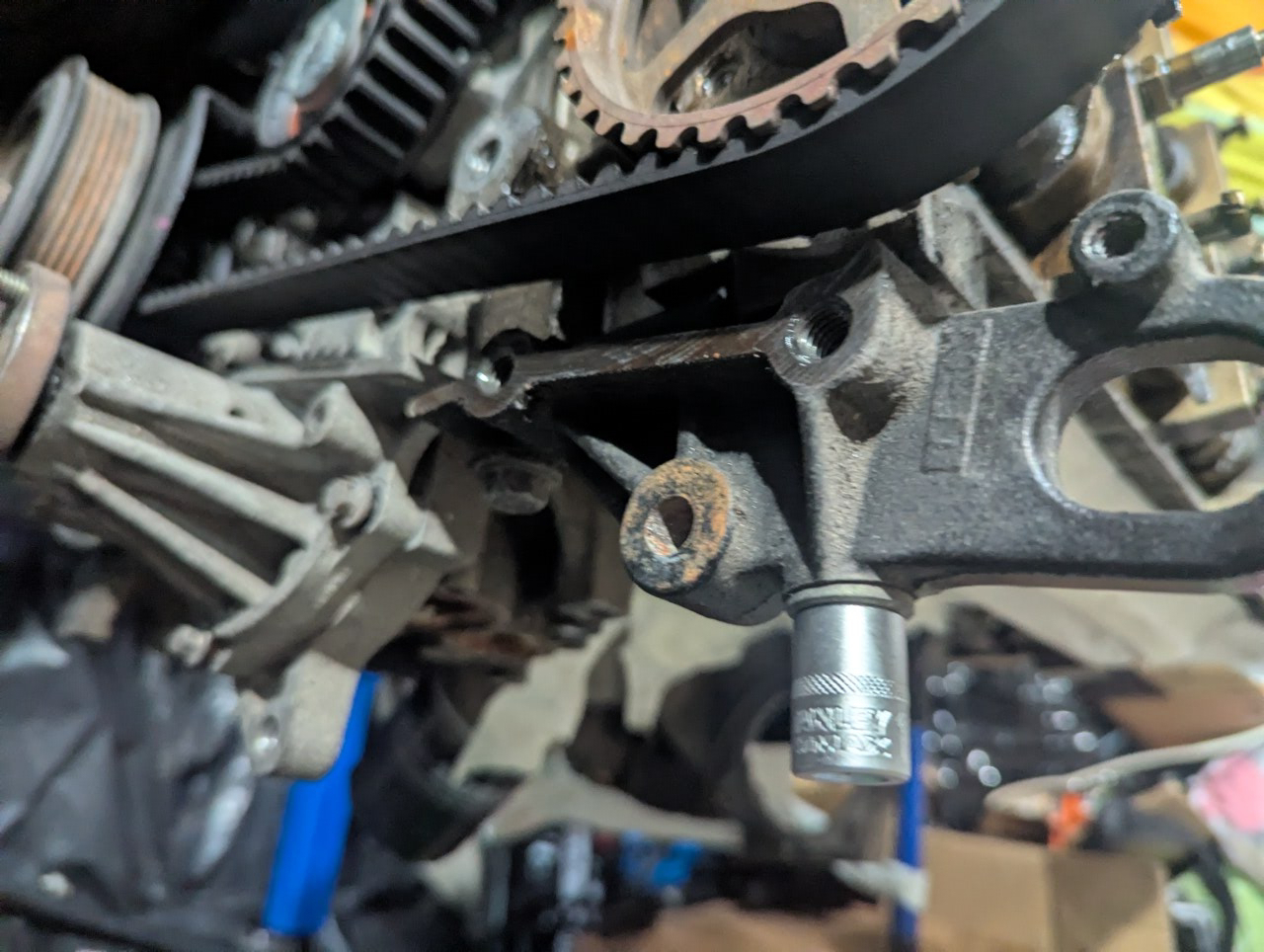


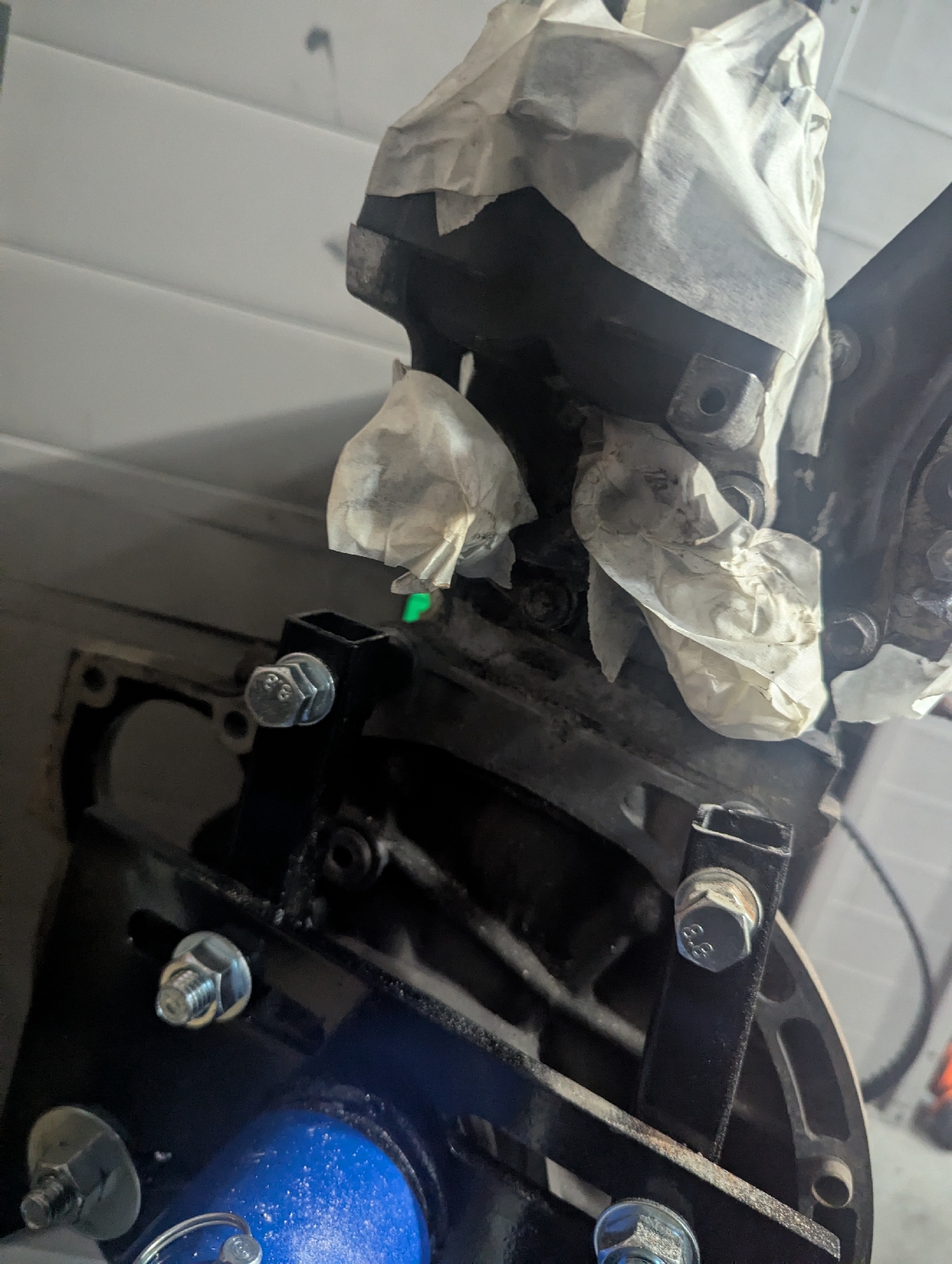

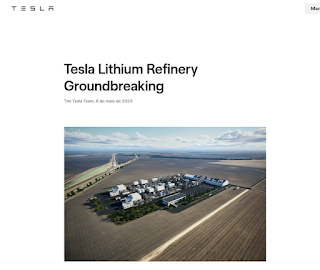















%20(1).jpg)

.JPG)


.jpeg)










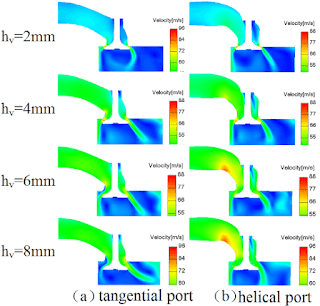
.jpeg)





